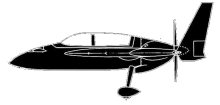
ASN Wikibase Occurrence # 138371
This information is added by users of ASN. Neither ASN nor the Flight Safety Foundation are responsible for the completeness or correctness of this information.
If you feel this information is incomplete or incorrect, you can submit corrected information.
| Date: | Sunday 4 September 2011 |
| Time: | 14:52 |
| Type: |  Rutan Long-EZ |
| Owner/operator: | Private |
| Registration: | N9DZ |
| MSN: | 863 |
| Engine model: | Penn Yan Aero XE-320 |
| Fatalities: | Fatalities: 1 / Occupants: 1 |
| Aircraft damage: | Substantial |
| Category: | Accident |
| Location: | North of Kanab in southern Utah -
 United States of America United States of America
|
| Phase: | En route |
| Nature: | Private |
| Departure airport: | Bryce Canyon Ar, UT (BCE) |
| Kanab, UT | |
| Investigating agency: | NTSB |
| Confidence Rating: |
The pilot/builder of the experimental amateur-built airplane was flying in the number two position in a flight of three airplanes. Radar data identified the airplane flying about 1.5 nautical miles (nm) behind the lead airplane and about 4 nm ahead of the number three airplane. As they approached their destination, the pilot of the lead airplane asked for a radio frequency change to the destination airport’s common traffic advisory frequency. The accident pilot and the pilot of the number three airplane acknowledged this request. However, the accident pilot never checked in on the new frequency. Radar data at this point identified the airplane in a straight cruise ground track at an altitude of about 500 feet over flat desert terrain. The wreckage was located almost directly beneath the last radar data point. Vegetation and soil disturbance at the initial impact point suggested that the airplane was in a 25-to-30-degree right bank and 15-to-25-degree nose-low pitch attitude at impact. Autopsy and toxicological testing of the pilot revealed no evidence of impairment or incapacitation. Postaccident examination of the engine and airframe revealed no evidence of mechanical malfunction or failure that would have precluded normal operation. The investigation was unable to determine why the pilot failed to maintain control of the airplane.
Probable Cause: The pilot's loss of airplane control during cruise flight.
Accident investigation:
 |
|
Sources:
NTSB
Location
Revision history:
| Date/time | Contributor | Updates |
|---|---|---|
| 05-Sep-2011 00:12 | gerard57 | Added |
| 06-Sep-2011 04:09 | RobertMB | Updated [Aircraft type, Registration, Cn, Operator, Other fatalities, Destination airport, Source, Narrative] |
| 21-Dec-2016 19:26 | ASN Update Bot | Updated [Time, Damage, Category, Investigating agency] |
| 27-Nov-2017 17:12 | ASN Update Bot | Updated [Operator, Other fatalities, Departure airport, Destination airport, Source, Narrative] |
Corrections or additions? ... Edit this accident description
The Aviation Safety Network is an exclusive service provided by:


 ©2024 Flight Safety Foundation
©2024 Flight Safety Foundation